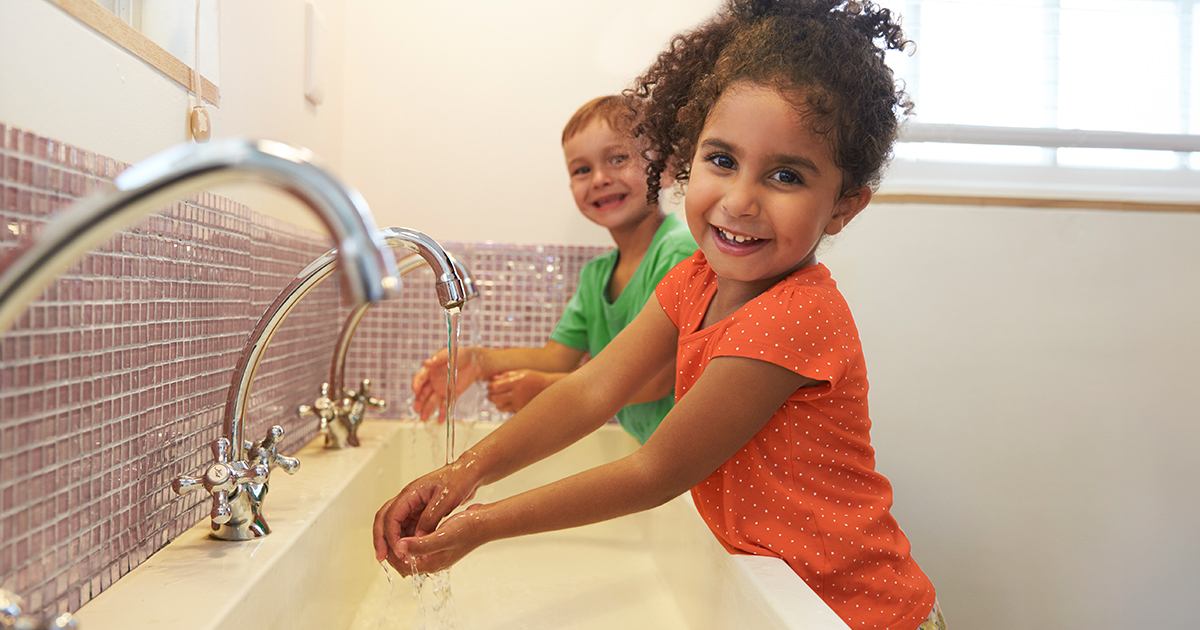
It’s back-to-school time – and that comes with new friends, new challenges and unfortunately new germs.
So, what gives? Kids don’t always wash their hands (correctly) or cover their noses or mouths. This increases the spread of germs that may cause illness. Many shared items and areas in schools also can – and do – collect germs, turning your child’s school from a place of learning into a petri dish. School-age kids average 6-7 colds a year. Many school-age children also get a stomach bug at least 2-3 times per year.
Study up on back-to-school illness, learn the top 5 germiest places in schools, what illnesses to watch for, how to keep your child safe, and when medical help is needed.
Keeping kids and classrooms healthy can be challenging. Here are the five places in schools where germs linger the most:
It probably comes as no surprise to find bathrooms at the top of this list. Most of us assume that bathrooms are germ havens, but school bathrooms are actually cleaned often throughout the day. The main culprit isn’t the bathroom itself, but the doors going in and out. Not all kids wash their hands or wash them properly before exiting, leaving germs behind for everyone who enters and exits the bathroom after them.
The human mouth is loaded with bacteria, and studies show that water fountains are places where microbes love to congregate. Water often splashes from a child’s face and mouth onto the faucet or spout as they sip. Whether your child is taking a quick drink or filling a water bottle, school water fountains are high-touch surfaces filled with germs.
Reusable cafeteria trays and lunchboxes are excellent for reducing waste, but not so much for preventing the spread of germs. While cafeteria plates and cups are washed after every use, the same isn’t necessarily true for reusable cafeteria trays and lunchboxes. The trays are often touched by many different students, leaving them loaded with germs. Lunchboxes travel with the student, becoming exposed to germs from all over.
Pens, markers, scissors, keyboards, desks, tables, chairs – the list of shared items in schools is quite extensive. The school library, gymnasium, playground, and other communal areas also have many shared surfaces. Ideally, your child should wash their hands after touching anything that’s used by others.
Here’s an alarming statistic: your child’s school backpack has 31 times the number of germs as your cell phone and 28 times the amount found on a toilet seat. Yuck ! Backpacks get dragged from school to home to bathroom to bus, there are tons of opportunities for them to pick up germs.
There are many hygiene habits that can help protect your child and your family against illness. But, how do you make it fun for your kid?
There are over 200 variations of the common cold, and it takes years for children to build their immunity to full strength.
Despite your prevention efforts, germs are essentially everywhere – in the air, on surfaces, and more – and school aged kids have the highest level of exposure. Talk about germs with your child regularly so they understand why they must take precautions.
The most common back to school illnesses are colds, stomach bugs, strep throat and pink eye:
vybe provides care for a wide range of illnesses. Visit your nearest vybe if your child experiences any of the following:
All vybe clinics have licensed medical professionals with a wide range of healthcare knowledge. vybe treats patients of all ages, and we can quickly diagnose your child’s illness and provide medication if needed.
Whether a back to school illness or something else, walk-in or schedule an appointment at your local vybe urgent care today!
FIND YOUR VYBE